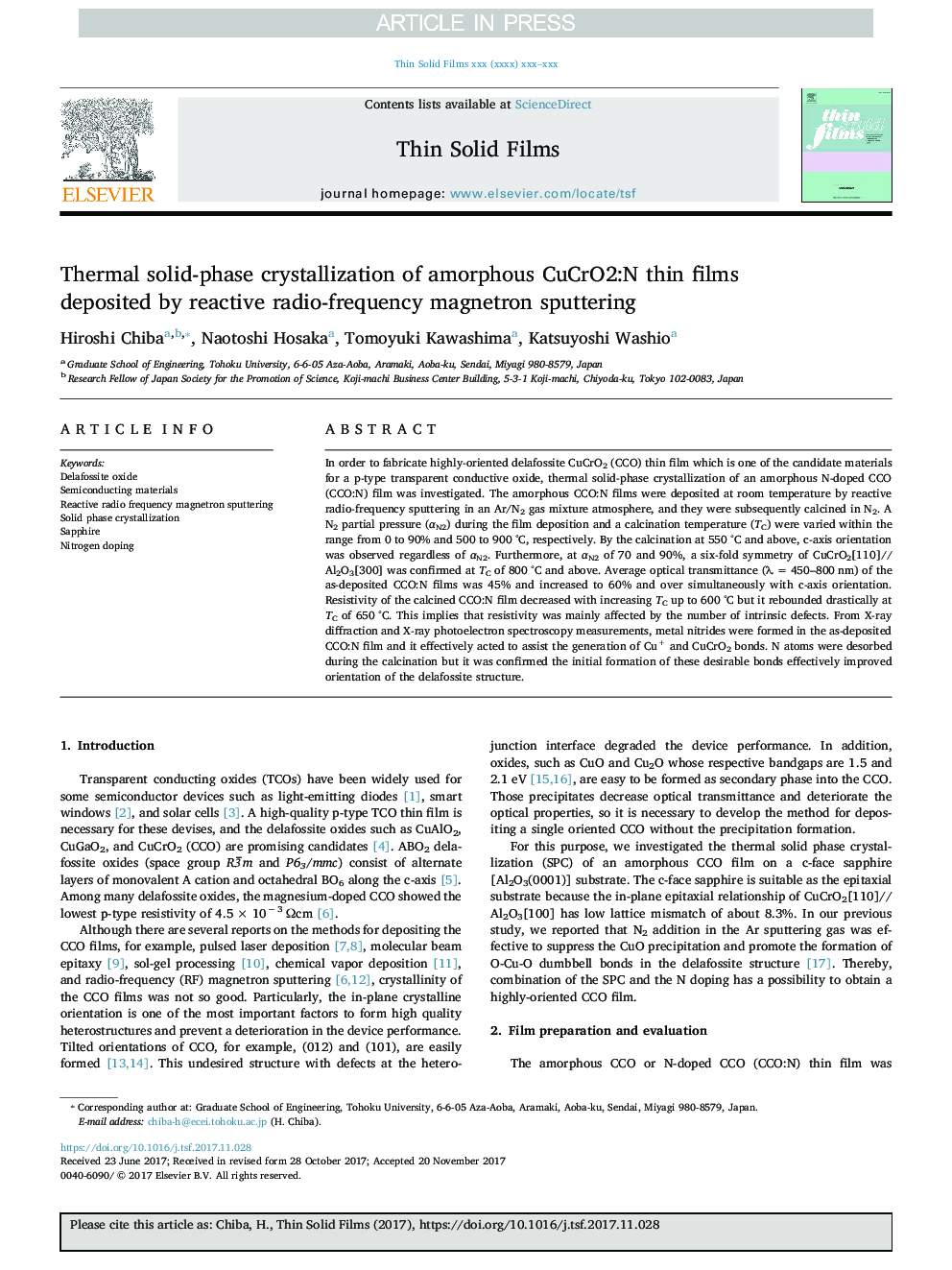| Article ID | Journal | Published Year | Pages | File Type |
|---|---|---|---|---|
| 8032773 | Thin Solid Films | 2018 | 7 Pages |
Abstract
In order to fabricate highly-oriented delafossite CuCrO2 (CCO) thin film which is one of the candidate materials for a p-type transparent conductive oxide, thermal solid-phase crystallization of an amorphous N-doped CCO (CCO:N) film was investigated. The amorphous CCO:N films were deposited at room temperature by reactive radio-frequency sputtering in an Ar/N2 gas mixture atmosphere, and they were subsequently calcined in N2. A N2 partial pressure (αN2) during the film deposition and a calcination temperature (TC) were varied within the range from 0 to 90% and 500 to 900 °C, respectively. By the calcination at 550 °C and above, c-axis orientation was observed regardless of αN2. Furthermore, at αN2 of 70 and 90%, a six-fold symmetry of CuCrO2[110]//Al2O3[300] was confirmed at TC of 800 °C and above. Average optical transmittance (λ = 450-800 nm) of the as-deposited CCO:N films was 45% and increased to 60% and over simultaneously with c-axis orientation. Resistivity of the calcined CCO:N film decreased with increasing TC up to 600 °C but it rebounded drastically at TC of 650 °C. This implies that resistivity was mainly affected by the number of intrinsic defects. From X-ray diffraction and X-ray photoelectron spectroscopy measurements, metal nitrides were formed in the as-deposited CCO:N film and it effectively acted to assist the generation of Cu+ and CuCrO2 bonds. N atoms were desorbed during the calcination but it was confirmed the initial formation of these desirable bonds effectively improved orientation of the delafossite structure.
Related Topics
Physical Sciences and Engineering
Materials Science
Nanotechnology
Authors
Hiroshi Chiba, Naotoshi Hosaka, Tomoyuki Kawashima, Katsuyoshi Washio,
